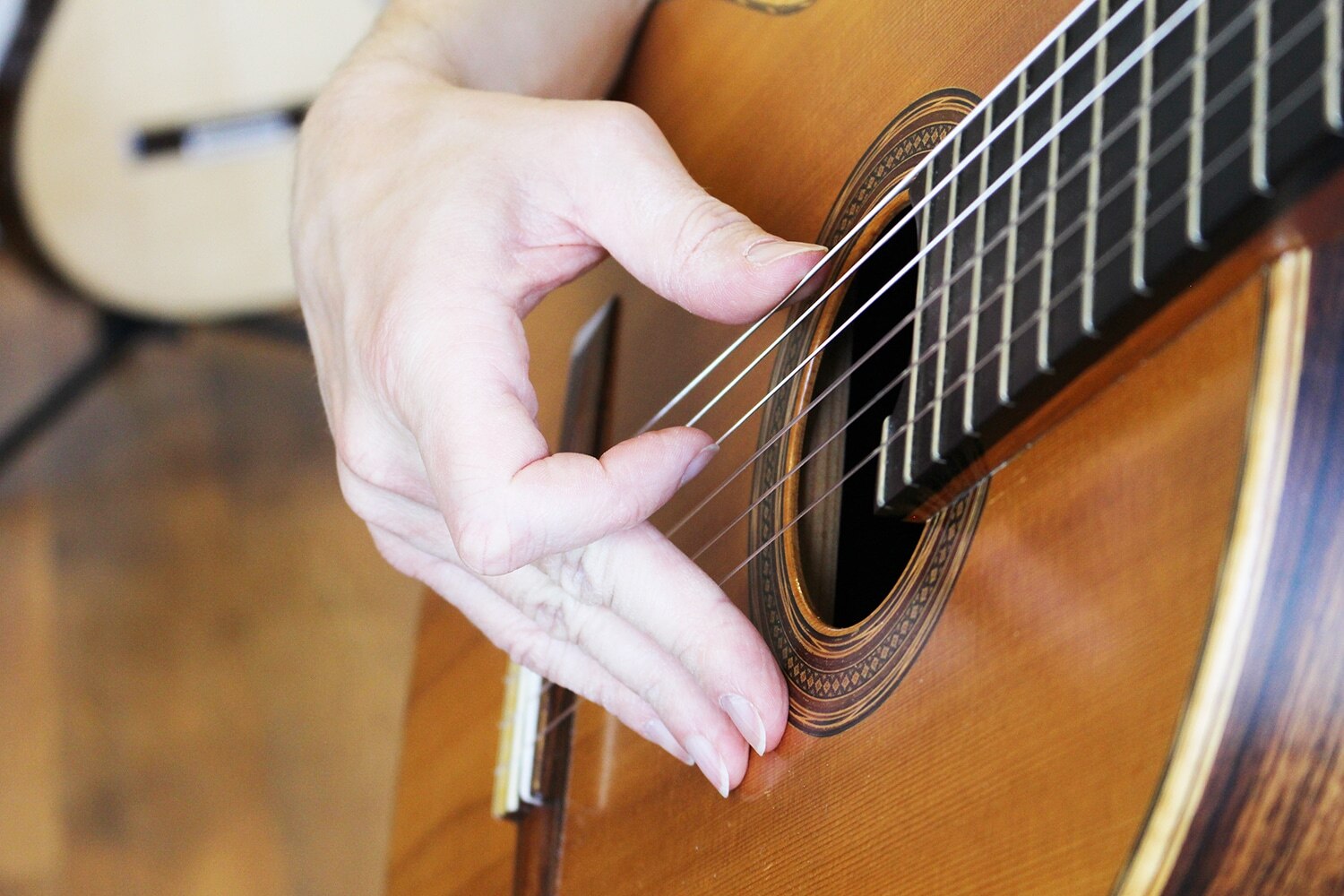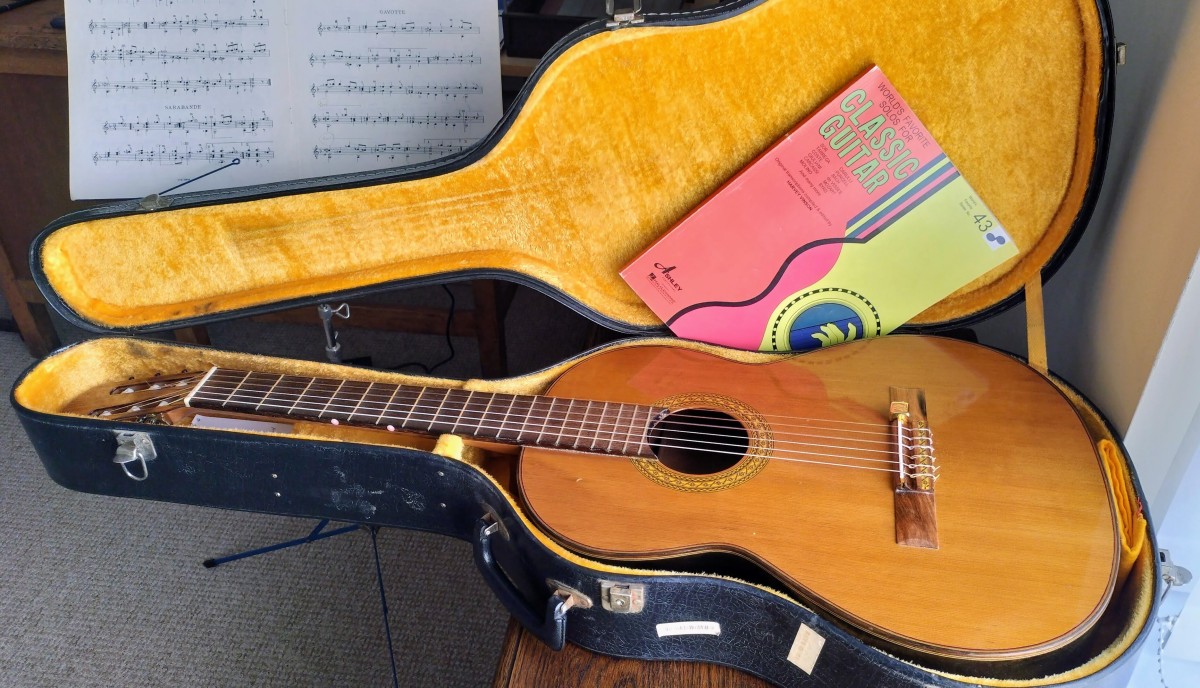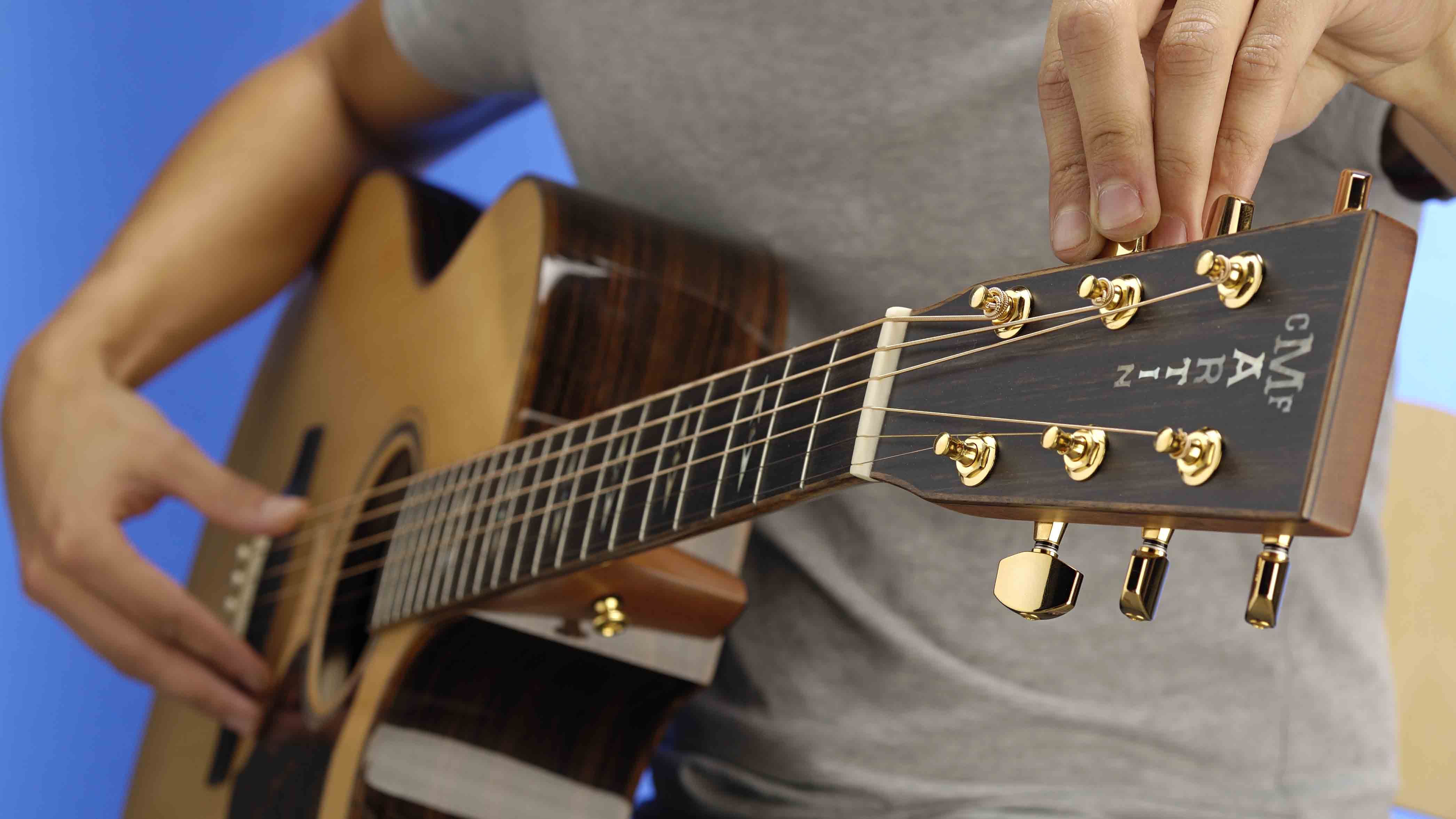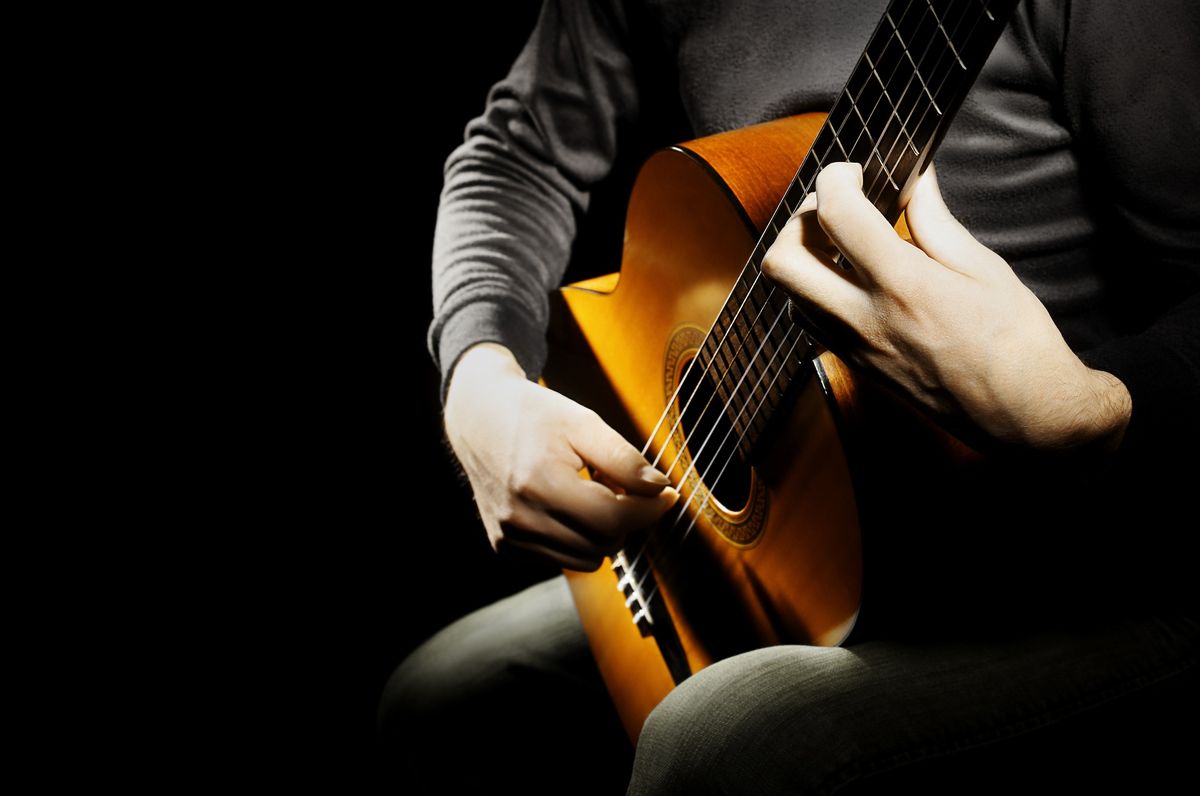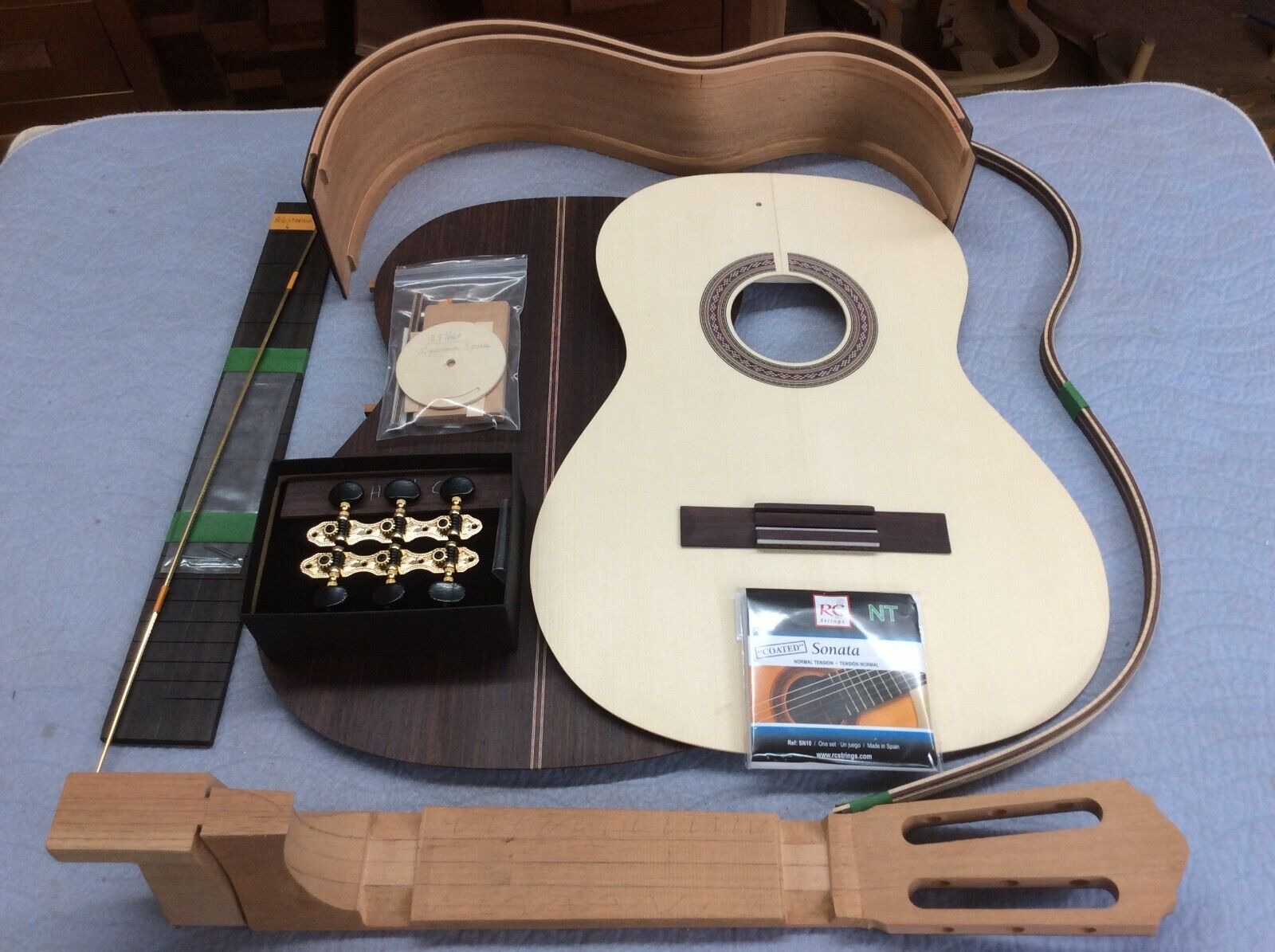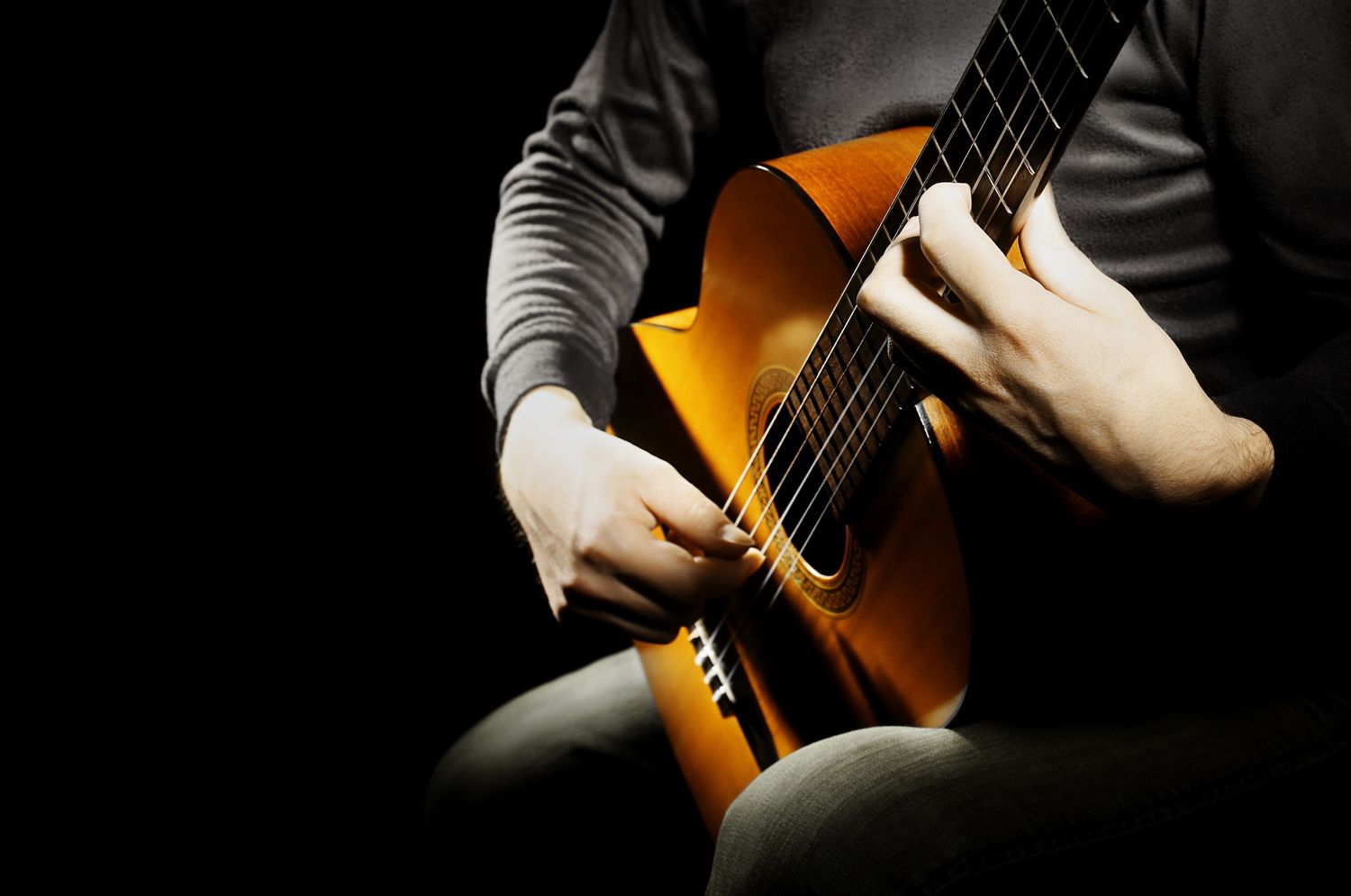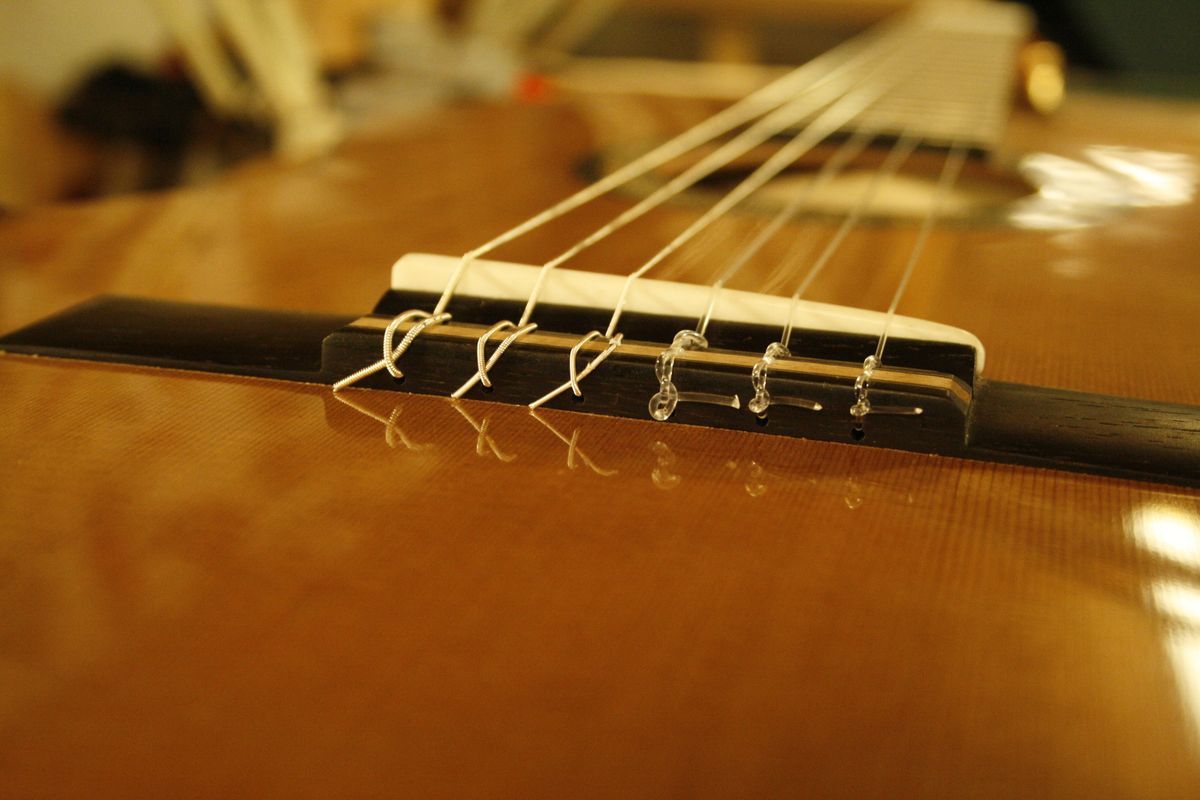

Classical
How To Hold Classical Guitar
Modified: January 22, 2024
Learn the proper technique for holding a classical guitar with step-by-step instructions. Improve your playing and posture with these tips for a comfortable and stable grip.
(Many of the links in this article redirect to a specific reviewed product. Your purchase of these products through affiliate links helps to generate commission for AudioLover.com, at no extra cost. Learn more)
Table of Contents
Introduction
Welcome to the world of classical guitar! Whether you are a beginner picking up the instrument for the first time or an experienced guitarist looking to refine your technique, understanding how to hold the classical guitar is of utmost importance. Proper posture and hand placement not only affect the sound produced, but they also impact your comfort and ability to play with ease.
The classical guitar, with its unique shape and nylon strings, requires a specific approach to achieve the best results. Unlike other guitar styles, such as electric or acoustic, the classical guitar is played in a seated position, with the instrument resting on the non-dominant leg. This positioning allows for better control and precision while playing.
In this article, we will explore the essential techniques for holding a classical guitar correctly. We will cover everything from proper posture to hand and finger placement, thumb position, and achieving balance and stability. By following these guidelines and incorporating them into your practice routine, you will develop a solid foundation for your classical guitar journey.
So, let’s dive in and discover the secrets of holding the classical guitar!
Essential Techniques
Before we delve into the specifics of holding the classical guitar, let’s explore some foundational techniques that will enhance your playing experience. These techniques ensure optimal sound production, reduce strain on your hands and body, and allow for greater control over the instrument.
One of the fundamental principles of holding the classical guitar is maintaining a relaxed and natural position. Tension in your body can hinder your playing and lead to discomfort or even injury. Take a moment before you start playing to do some light stretching and relaxation exercises to loosen up your muscles.
Proper breathing is another important aspect of playing the classical guitar. Breathing deeply and evenly helps to calm your mind and body, allowing you to focus on your playing and produce a rich, full sound. Remember to breathe naturally and avoid holding your breath while playing.
Now that we have covered the basics, let’s move on to the specific techniques for holding the classical guitar. These techniques include proper posture, placement of fingers, thumb position, hand and arm position, holding the neck, holding the body, achieving balance and stability, and the importance of relaxation.
Mastering these techniques will not only improve your playing but also help prevent strain and injury in the long run. So, let’s dive in and discover the secrets to holding the classical guitar with confidence and ease.
Proper Posture
When it comes to playing the classical guitar, proper posture is crucial. By maintaining correct posture, you not only optimize your ability to play with ease and precision but also prevent unnecessary strain on your body.
Begin by sitting on a straight-backed chair with your feet flat on the floor. Maintain an upright, yet relaxed, posture by aligning your back with the back of the chair. Avoid slouching or leaning too far forward or backward. Keeping your spine straight allows for better alignment of your hands and arms with the guitar.
Ensure that your shoulders are relaxed and not hunched up. Tension in the shoulders can inhibit your playing and cause discomfort over time. Imagine your shoulders gently melting away from your ears as you sit and play.
It is also important to position the guitar correctly on your non-dominant leg. Rest the waist of the guitar on your thigh, with the lower part of the guitar resting against your midsection. This positioning maintains stability and enables you to reach all parts of the fretboard comfortably.
As you sit, keep your head level and avoid tilting it too far forward or backward. Your neck should be relaxed and aligned with your spine. Maintaining a neutral head position allows for better control and reduces strain on your neck muscles.
Finally, it is crucial to have good overall body tension management. While playing, be mindful of any tension building up in your body, particularly in your arms, wrists, and hands. Regularly check in with your body and consciously release any tension you may feel.
By incorporating these posture guidelines into your playing routine, you will establish a solid foundation for holding the classical guitar and ensure a comfortable and enjoyable playing experience.
Placement of Fingers
The proper placement of fingers on the classical guitar is essential for achieving clean and accurate notes. Each finger has a designated role and position on the fretboard, contributing to the overall clarity and tone of the music.
Let’s start with the left hand, also known as the fretting hand. The fingers on the left hand are numbered, with the index finger being 1 and the pinky finger being 4. When placing your fingers on the fretboard, it’s important to use the fingertips rather than the pads of your fingers. This allows for better control and prevents unintentional muting of adjacent strings.
When playing on the higher frets, try to keep your fingers perpendicular to the fretboard to ensure clean and precise notes. Avoid allowing your fingers to collapse or lean against adjacent strings, which can result in unwanted buzzing or muted notes.
As you play different chords and melodies, be mindful of the positioning of your fingers. Aim for a curved hand shape, with a slight space between the palm of your hand and the back of the guitar neck. This curvature facilitates better finger reach and flexibility.
The right hand, or plucking hand, is responsible for producing sound by plucking or strumming the strings. The fingers on the right hand are designated by letters. The thumb is designated as p, the index finger as i, the middle finger as m, and the ring finger as a.
When plucking the strings, your fingers should approach the strings with a relaxed, rounded shape. Strive to have a consistent distance between your fingertips and the strings to maintain a balanced tone across all strings.
For fingerstyle playing, where each finger is assigned a specific string to pluck, it’s important to develop accuracy and control. Practice exercises that focus on each finger individually to strengthen your finger independence and improve your overall technique.
By paying attention to the placement of your fingers on the fretboard and the strings, you will develop the dexterity and precision needed to play the classical guitar with finesse and musicality.
Thumb Position
The position of your thumb on the classical guitar is crucial for maintaining control and facilitating efficient movement along the fretboard. The thumb serves as a foundation, providing stability and balance while supporting the fingers.
When placing your thumb on the back of the guitar neck, it’s important to position it in a relaxed and natural manner. Avoid pressing the thumb too hard against the neck, as this can restrict your finger movement and cause tension in your hand and arm.
The ideal position for the thumb is in the middle of the back of the guitar neck, aligning with the middle fingers of the left hand. This placement allows for equal support across all fingers and promotes a balanced hand position.
While playing chords or melodies, be mindful of the angle of your thumb. It’s generally recommended to keep the thumb positioned slightly towards the headstock (closer to the higher strings). This angling enables a better reach for the fingers, especially when playing on the lower strings or reaching for wider interval stretches.
Avoid letting your thumb protrude over the top of the fretboard, as this can hinder your ability to navigate the fretboard and dampen the vibration of the strings. Keep it relaxed and parallel to the back of the guitar neck.
As you progress in your playing, you may encounter variations in thumb positioning depending on the specific technique or passage you’re playing. For example, playing scales or arpeggios may require a slight adjustment in thumb position to accommodate the motion of your fingers.
Ultimately, the position of your thumb should allow for comfortable and natural movement of your fingers on the fretboard. Experiment with different thumb positions and angles to find what feels most comfortable and allows for optimal control and dexterity.
By paying attention to the position of your thumb, you will establish a solid foundation for your left-hand technique and enhance your overall playing experience on the classical guitar.
Hand and Arm Position
The position of your hand and arm when playing the classical guitar has a significant impact on your technique and overall sound production. Proper hand and arm positioning ensure efficient movements, reduce strain, and promote optimal control over the instrument.
Let’s start with the left hand, also known as the fretting hand. Your left hand should be positioned in a relaxed and curved manner. Avoid tensing your hand or fingers as this can hinder your ability to play smoothly and create unnecessary tension.
Place your thumb comfortably on the back of the guitar neck, slightly towards the headstock. This position allows your fingers to reach the frets without straining. Keep your wrist straight and relaxed, avoiding any excessive bending or twisting.
When playing on the lower frets, closer to the guitar body, your left arm should be positioned in a way that allows you to reach all the strings comfortably. As you move towards the higher frets, your left arm may need to extend slightly to maintain optimal finger reach.
Now let’s move on to the right hand, or plucking hand. The right arm should rest comfortably on the body of the guitar. Avoid locking your elbow or placing excessive tension in your shoulder. Your forearm should be in a relaxed and natural position, allowing for free movement across the strings.
As you pluck the strings, your hand should adopt a rounded shape. The fingers should approach the strings at an angle, curving naturally to facilitate a smooth and controlled motion. Avoid excessive tension in your hand and fingers and aim for a consistent distance between your fingertips and the strings.
Additionally, be mindful of the resting position of your right hand when not plucking the strings. Many classical guitarists rest their hand on the top of the guitar body, near the bridge. This position allows for easy access to the strings while minimizing interference with their vibration.
Remember to maintain a relaxed and loose grip on the guitar. Avoid gripping the neck or the body too tightly, as this can cause unnecessary tension and restrict your range of motion.
By maintaining proper hand and arm position, you will have better control and agility when playing the classical guitar. Regular practice and mindfulness of these techniques will allow you to develop a strong foundation for your technique and bring out the best in your playing.
Holding the Neck
How you hold the neck of the classical guitar greatly affects your ability to navigate the fretboard and execute chords and melodies with precision. By establishing the correct hand position and grip on the neck, you can enhance your technique and achieve a clean, articulate sound.
When holding the neck, it’s important to maintain a relaxed and comfortable grip. Avoid clenching or squeezing the neck too tightly, as this can hinder your finger movement and cause unnecessary strain in your hand and wrist.
The thumb plays a crucial role in holding the neck of the guitar. Position your thumb behind the neck, opposite your fingers. The pad of your thumb should be in contact with the back of the neck, providing support and stability.
It’s common to position the thumb slightly towards the headstock or anchor it on the bass string. This helps with stability and leverage, especially when playing barre chords or reaching for stretches across multiple frets.
Be mindful of maintaining a slight gap between your fingers and the back of the neck. A curled finger shape, with the fingertips touching the fretboard, allows for accurate finger placement and minimizes string buzzing or unintended notes.
As you move up and down the neck, adjust the position of your hand accordingly. For lower frets, near the guitar body, your hand may need to rotate slightly to achieve optimal finger reach. Conversely, as you ascend towards the higher frets, your hand may need to tilt slightly to maintain proper finger placement.
When playing chords or intricate fingerpicking patterns, be aware of the position of your fingers and the thumb. Aim for a balanced and even distribution of pressure across the strings to produce a clear and resonant sound.
Remember to periodically check the tension in your hand and make any necessary adjustments to maintain a relaxed and fluid playing experience. Release any excess tension in your hand, arm, and shoulder muscles to ensure maximum dexterity and prevent fatigue.
With practice and attention to detail, you will develop a comfortable and effective grip on the neck of the classical guitar. Strive for a balance between control and relaxation, allowing for effortless navigation of the fretboard and the ability to express yourself musically.
Holding the Body
The way you hold the body of the classical guitar contributes to your overall comfort, stability, and ability to achieve a balanced sound. While the body of the guitar rests on your non-dominant leg, how you support and position it greatly influences your playing experience.
Begin by sitting on a straight-backed chair with your feet flat on the floor. Place the waist of the guitar on your thigh, ensuring that the lower part of the guitar body rests against your midsection. This positioning allows for stability and ease of access to the strings and fretboard.
Place your forearm against the lower bout of the guitar body for added support. This helps prevent the guitar from sliding or shifting while playing, especially during more vigorous strumming or fingerpicking passages.
While holding the guitar, avoid excessive pressure or gripping the body too tightly. Allow the guitar to rest comfortably against your midsection, maintaining a relaxed and natural position.
Be mindful of the angle at which you hold the guitar. The top of the guitar, also known as the soundboard, should be slightly tilted upwards towards your chest. This angle facilitates the proper projection of sound and allows your hand and fingers to access the strings comfortably.
As you play, maintain a relaxed posture and avoid slouching or hunching over the guitar. Relax your shoulders and keep your back straight to optimize your reach and technique while minimizing strain on your body.
Feeling connected to the guitar body is important for both comfort and technique. Experiment with different hand placements on the body to find what feels most natural and allows for easy access to the strings and controls.
Remember that finding the optimal body position may require some adjustment and experimentation based on your body size, guitar size, and personal preferences. Don’t be afraid to explore different positions to find what works best for you.
Ultimately, the key is to find a comfortable and secure grip on the guitar body that allows for unrestricted movement of your plucking hand and a balanced position for both hands to execute techniques with precision.
By mastering the art of holding the guitar body, you will be able to navigate the instrument with ease and produce a rich, resonant sound that truly showcases the potential of the classical guitar.
Achieving Balance and Stability
Balance and stability are crucial elements when it comes to holding the classical guitar. By achieving a balanced and stable position, you can play with greater control, accuracy, and ease. Let’s explore some techniques to help you achieve optimal balance and stability while playing.
Begin by ensuring that your body is centered and aligned with the guitar. Sit tall with your back straight and your weight evenly distributed on your sitting bones. This balanced posture provides a solid foundation for holding the guitar.
As you position the guitar on your non-dominant leg, make sure it rests securely against your body. The guitar should feel stable and connected, which allows for better control and prevents unnecessary movement or shifting during play.
When playing, be aware of any tension or fatigue building up in your body. Regularly check in with your shoulders, arms, and hands to ensure they remain relaxed. Tension can hinder your playing ability and lead to discomfort or even injury over time.
Pay close attention to the distribution of pressure between your hands. Both your left hand, which presses down on the frets, and your right hand, which plucks or strums the strings, should exert equal and balanced pressure. This balance helps maintain stability and control throughout your playing.
As you transition between chords or complex fingerings, try to minimize any unnecessary movements. Efficient and deliberate finger placement, along with smooth hand transitions, will enhance your command over the guitar and promote stability in your playing.
Take advantage of the support provided by your forearm against the guitar body. This point of contact helps anchor and stabilize the guitar, allowing for smoother and more controlled movements across the fretboard and strings.
Remember to continuously adjust and fine-tune your body positioning as needed. The shape and size of the guitar, along with your personal preferences and physical attributes, may require slight modifications to achieve optimal balance and stability.
Lastly, developing a sense of body awareness and sensitivity to small adjustments can greatly benefit your overall playing experience. Through regular practice and mindful observation of your body’s alignment, you will naturally refine your balance and stability while playing.
By striving for balance and stability in your technique, you will not only enhance your playing ability but also improve your overall musical expression. So, focus on achieving and maintaining a solid foundation, and let your hands and fingers glide effortlessly across the beautiful soundscape of the classical guitar.
Importance of Relaxation
Relaxation is a fundamental aspect of playing the classical guitar. When you are relaxed, you can achieve better control, clarity, and expressiveness in your playing. Let’s explore the importance of relaxation and how it can positively impact your journey as a guitarist.
First and foremost, relaxation promotes better technique. When your muscles are tense, your movements can become rigid and restricted. By consciously relaxing your muscles, particularly in your hands, arms, shoulders, and back, you allow for more fluid and effortless motion. This leads to smoother transitions between chords and notes, allowing your music to flow naturally.
Next, relaxation helps prevent fatigue and injury. Excessive tension can lead to muscle strain and discomfort, ultimately hindering your playing and potentially causing long-term issues. By cultivating relaxation in your playing, you reduce the risk of repetitive strain injuries and maintain the longevity of your musical journey.
Relaxation also enhances your ability to connect emotionally with the music. When you are relaxed, you can focus on expressing the nuances and dynamics of the music, rather than being preoccupied with tense muscles or technical difficulties. It allows you to tap into the true essence of the music and convey it authentically to your listeners.
One way to promote relaxation is through mindful breathing. Deep, slow breaths send signals to your body to release tension and promote a state of calm. Incorporate deep breathing exercises into your practice routine, allowing yourself to fully relax and center your focus on the music.
Regular breaks during practice sessions are also important for relaxation. Taking short breaks allows your muscles to rest and recover, preventing overexertion and allowing you to maintain a relaxed state throughout your practice.
Additionally, developing a mindfulness practice can contribute to relaxation in your playing. By being present and fully engaged in the music, you can let go of distractions and unproductive thoughts, allowing your body and mind to enter a state of flow. This heightened focus and relaxation translate into improved performance and enjoyment of your instrument.
Remember, relaxation is not a one-time achievement but rather an ongoing process. It requires patience, self-awareness, and dedication. Gradually incorporating relaxation techniques into your playing will lead to significant improvements in your overall musical experience.
So, make relaxation a priority in your practice sessions and performances. Embrace the calmness, the ease, and the joy that comes from playing the classical guitar with a relaxed and open mindset.
Practice Tips
Practicing the classical guitar is essential for honing your skills and becoming a proficient player. With focused and consistent practice, you can make significant progress on your musical journey. Here are some tips to help you maximize the effectiveness of your practice sessions:
- Set specific goals: Clearly define your practice goals for each session. Whether it’s mastering a new technique, learning a challenging piece, or improving your speed and accuracy, having specific goals will help guide your practice and measure your progress.
- Establish a routine: Consistency is key. Set aside regular practice time that works best for you, whether it’s daily or a few times a week. Make it a habit to practice during these dedicated sessions, even if it’s just for a short period. Regular practice will yield better results over time.
- Warm up: Before diving into challenging repertoire or exercises, warm up your hands and fingers with gentle stretches and exercises. This helps prevent injuries and prepares your muscles for the demands of playing.
- Break it down: When tackling a new piece or technique, break it down into smaller sections. Practice each section separately, focusing on accuracy and clarity. Gradually combine the sections as you become more comfortable, eventually playing the piece as a whole.
- Slow it down: Don’t be afraid to play at a slower tempo, especially when learning something new. Slow, deliberate practice allows you to focus on proper technique, finger placement, and musicality. As you gain proficiency, gradually increase the tempo.
- Use a metronome: A metronome is a valuable tool for developing a sense of rhythm and timing. Incorporate it into your practice sessions, gradually increasing the speed as you improve. This helps to build precision and maintain a steady tempo.
- Record yourself: Recording your practice sessions can provide valuable feedback. Listen to the recordings to identify areas that need improvement. Analyze your technique, sound quality, and musical interpretation, making adjustments as needed.
- Vary your practice: Mix up your practice routine to keep things interesting and prevent monotony. Practice scales, arpeggios, etudes, and pieces from different genres and time periods. This broadens your musical repertoire and challenges your skills in various ways.
- Seek guidance: Consider taking lessons from a qualified classical guitar teacher. A teacher can provide valuable guidance, correct technical flaws, offer personalized feedback, and provide a structured approach to your learning.
- Embrace slow practice: Slow practice is key to mastering challenging passages. Break down difficult sections and play them at an extremely slow tempo, focusing on precision and accuracy. Gradually increase the speed as you improve, always prioritizing proper technique.
Remember, practice is a journey, and progress takes time. Be patient with yourself and celebrate the small victories along the way. Stay focused, maintain a positive mindset, and enjoy the process of becoming a skilled classical guitarist.
Conclusion
Congratulations on taking the first steps to mastering the art of holding the classical guitar! By understanding the essential techniques, proper posture, hand and arm positions, and the importance of relaxation, you have gained valuable insights into cultivating a solid foundation for your playing.
Remember that the key to success lies in consistent practice and mindful application of these techniques. By dedicating regular practice time, setting specific goals, and incorporating the practice tips mentioned, you can steadily progress on your musical journey.
As you continue your exploration of the classical guitar, don’t forget to embrace the beauty of the instrument and the joy it brings. Music is a universal language that allows you to express yourself, connect with others, and experience the immense satisfaction of creating something beautiful.
Whether you’re a beginner or an experienced guitarist, the journey of mastering the classical guitar is filled with continuous growth and endless possibilities. Stay open to learning, seek guidance when needed, and enjoy the process of refining your technique and musicality.
Incorporate these techniques into your playing, experiment with different approaches, and adapt them to suit your unique style and preferences. By doing so, you will develop your own personal relationship with the classical guitar and unlock your full potential as a musician.
So, embrace the challenge, embrace the beauty, and enjoy the incredible journey of playing the classical guitar. May your melodies captivate hearts, your technique dazzle minds, and your passion for this timeless instrument continue to grow.

